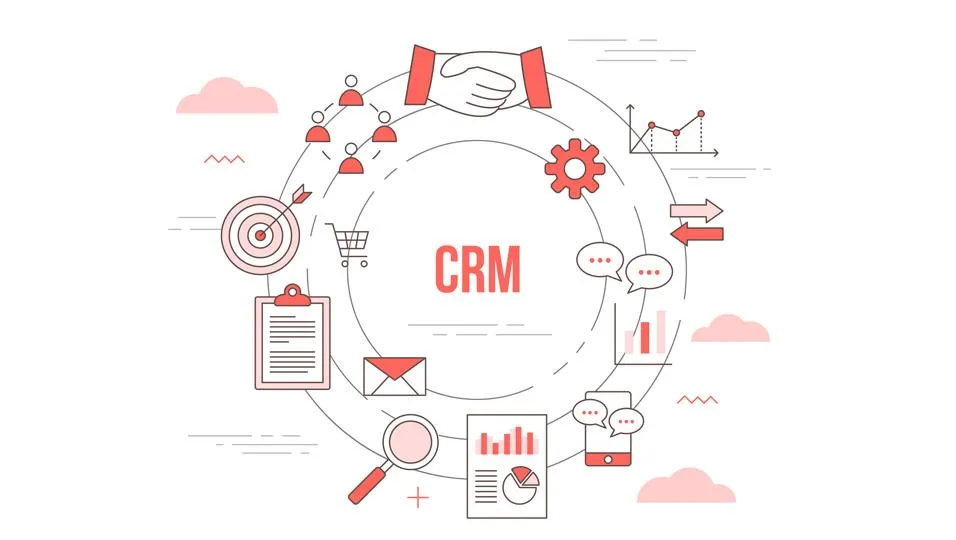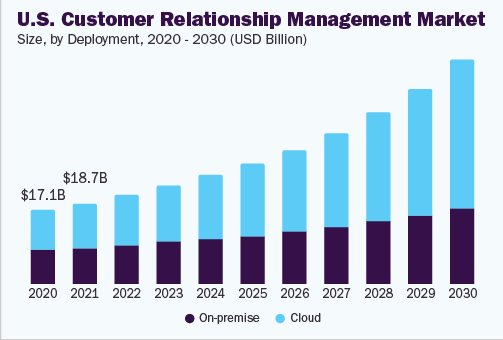CHECK OUR BLOG
FOR INDUSTRY INSIGHTS
& UPDATES
CHECK OUR BLOG FOR INDUSTRY INSIGHTS & UPDATES

How CRM Integration Services Enhance Your Workflow
In today's fast-paced business landscape, staying organized and efficient is more critical than ever. Companies are inundated with data—from customer interactions to sales metrics—and managing this information can feel overwhelming. This is where Customer Relationship Management (CRM) systems step in, acting as powerful tools that centralize all your client-related processes.
But what if you could take it a step further? Enter CRM Integration Services, the game-changer that streamlines your workflow and enhances productivity across your organization. Let's dive into how these services can transform the way you do business and why they should be on your radar.
What is a CRM, and why is it essential for businesses?

Customer Relationship Management, or CRM, is a technology that helps businesses manage interactions with current and potential customers. It consolidates customer information into one accessible platform, making it easier to track relationships over time.
A well-implemented CRM system can significantly enhance communication within teams. Employees can collaborate effectively without missing crucial details by having all client data in one place.
Moreover, CRMs empower companies to analyze customer behavior and preferences. This insight allows for tailored marketing strategies and improved service delivery.
In an era where personalized experiences matter immensely, leveraging a CRM is not just an option—it's essential for staying competitive. Businesses that embrace this technology often see increased sales efficiency and stronger customer loyalty.
Benefits of CRM Integration Services
CRM integration services offer a range of benefits that can elevate your business operations. One primary advantage is improved data accuracy. When systems work together seamlessly, the chances of human error are reduced significantly.
Another key benefit is increased efficiency. Automation streamlines repetitive tasks, allowing your team to focus on more strategic initiatives rather than manual entry or cross-referencing data from multiple sources.
Enhanced customer insights emerge as well. Integrating different platforms gives you a holistic view of client interactions and preferences. This can lead to more personalized service and stronger relationships.
Moreover, CRM integration fosters better collaboration among departments. With shared access to real-time information, sales, marketing, and customer support teams can align their efforts effectively without miscommunication.
Integrated solutions make scalability easier. As your business grows or changes direction, adapting software and processes becomes much simpler when everything is interconnected.
Features to look for in a CRM integration service
When choosing a CRM integration service, look for flexibility. Your business needs may change, and the proper integration should adapt seamlessly.
Scalability is also crucial. As your organization grows, the integration must accommodate increased data and user demands without compromising performance.
User-friendly interfaces can make a significant difference. A simple design enhances usability across various team members, ensuring everyone can navigate it easily. Look for robust customer support, too. Immediate assistance during any hiccups helps maintain productivity and minimizes downtime.
Consider security features. Protecting sensitive customer information is paramount in today's digital landscape. A trustworthy service will have encryption protocols to safeguard your data effectively.
Tips for ensuring a smooth and efficient integration process
Start by defining clear goals for your CRM integration. Understand what you want to achieve and communicate this with your team.
Next, key stakeholders should be involved early in the process. Their insights can highlight specific needs and potential hurdles during integration.
Prioritize data mapping carefully. Ensure that all relevant information from existing systems aligns correctly with the new CRM structure, which will minimize confusion later.
Test thoroughly before going live. Run multiple scenarios to identify any possible issues. A solid testing phase can save time and frustration down the road.
Once the integration is complete, provide adequate training for users. Familiarizing your team with new tools enhances overall productivity and system adoption without unnecessary delays or resistance.
U.S. Customer Relationship Management Market Size Forecast 2020-2030

The U.S. Customer Relationship Management (CRM) market is poised for dynamic growth from 2020 to 2030, driven by the ongoing evolution of business needs and technological advancements.
A fascinating aspect of this forecast lies in the dual deployment models, which show that businesses are increasingly gravitating toward on-premise and cloud solutions.
On-premise CRM systems offer organizations a sense of control and security, allowing for customized implementations tailored to specific operational requirements; however, as remote work becomes more prevalent, many companies are shifting their focus toward cloud-based CRM platforms.
These cloud solutions facilitate seamless access from anywhere and enable scalability and integration with other digital tools, enhancing collaboration between teams.
As customer engagement strategies evolve in an era marked by data-driven decision-making, both deployment options will play crucial roles in shaping how companies manage customer relationships while meeting diverse consumer expectations across various sectors.
Conclusion: The Importance of Streamlining Workflows with CRM Integration
Streamlining workflows is essential for any business aiming to thrive in today's competitive landscape. CRM integration services play a pivotal role in achieving this goal.
By seamlessly connecting various tools and platforms, these services eliminate the silos that often hinder productivity. With an integrated CRM system, teams can effortlessly access customer information across departments. This leads to improved communication and collaboration within organizations.
When data flows freely between systems, decision-making becomes quicker and more informed.
Moreover, automation features reduce manual tasks and save valuable time. Sales representatives can focus on building relationships rather than entering repetitive data into multiple systems. Enhanced analytics also provide insights that drive strategic decisions, helping businesses stay ahead of trends.
Investing in robust CRM integration services isn't just about technology; it's about enhancing efficiency and fostering growth. As companies evolve, those prioritizing streamlined workflows will be better positioned for success in an ever-changing market landscape.
NAVIGATION
SOLUTIONS
RESOURCES
LEGAL
COMPANY
GET IN TOUCH
128 City Road, London, EC1V 2NX
Company number: 14241556

© Copyright 2023. THE I NEED GROUP.
All Rights Reserved.
NAVIGATION
SOLUTIONS
RESOURCES
LEGAL
COMPANY
GET IN TOUCH
Company number: 14241556
128 City Road, London, EC1V 2NX

© Copyright 2023. THE I NEED GROUP. All Rights Reserved.
